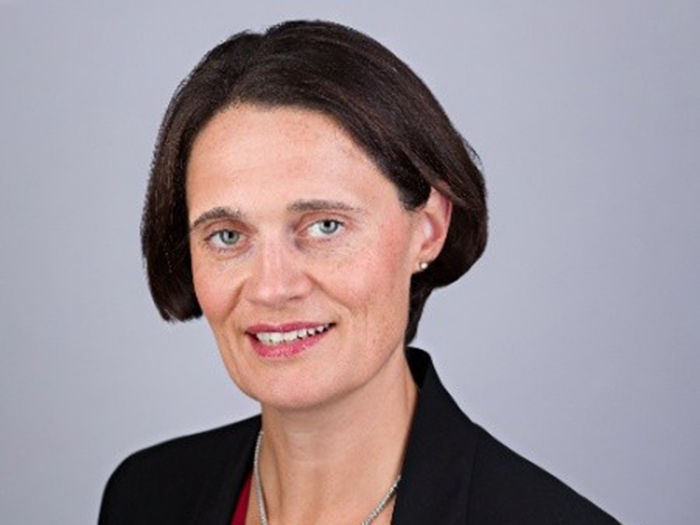Service Spotlight
The Value of Quantifying Industrial Risk Exposure

The saying goes, “You can’t manage what you can’t measure.”
Risk managers can relate. Attaching firm figures to loss potential and probability provides a road map to a company’s most significant exposures and serves as a starting point for prioritizing risk management strategies. However, many lack the resources to accurately enumerate their exposures.
In heavy or complex industries, a property loss can not only incur significant expenses related to repair or replacement. It can halt operations partially or completely for an extended period of time. Estimating extent and duration of those impacts and developing a plan of action to mitigate the consequences is key to avoiding substantial business interruption losses.
Torsten Leske, CEO at AXA Matrix Risk Consultants North America — which focuses on property risks for industrial companies — describes how quantification is a necessary next step after risk identification.
R&I: What are the top risks facing industrial facilities?
Torsten Leske: Property damage and business interruption resulting from fire, machinery breakdown, or natural catastrophes are potential exposures with significant loss potential faced by many industrial companies.
The potential business interruption loss is often greater than the property loss itself, especially when there are interdependencies between sites in more complex production chains.
In industries such as the automotive or aeronautical sectors, for example, parts are manufactured at several different sites and then assembled at other locations. So if something happens at one site, it can have a tremendous impact on other sites as well.
R&I: Are companies in this sector doing enough to mitigate these risks?
TL: An important issue is lack of accessibility of information and transparency into the extent of potential losses. Many companies don’t have a reliable way to quantify their exposure, which is the first step in determining how to prioritize risk management strategies.
R&I: Why is quantifying exposures so important?
TL: Attaching values to an exposure not only helps risk managers prioritize risk improvement decisions, it also enables them to demonstrate return on investment to their financial managers or the board of directors and more effectively argue for their support. Companies need tools to measure loss expectancy and compare that to the cost of implementing effective risk mitigation strategies.
This helps clients see where their money can be invested best to ease exposure. If you have a limited budget for capital improvements, you want to get the most benefit out of every dollar and achieve savings in the long run. Quantifying loss expectancy allows you to see calculate potential savings before you invest.
R&I: What tools do you use to measure loss expectancy?
TL: One tool we utilize called IsoRisk allows us to benchmark exposure at different sites or manufacturing tools, taking into account the vulnerability of a facility or tool to a loss, and the severity of a potential loss at each site. It thus provides a visual representation of a risk cluster that allows risk managers to easily identify the most exposed assets.
These tools also provide valuable help to risk managers internally to win support within their own organization, and externally to provide information to insurance markets.
Another tool called CITRAN graphs the loss expectancies of identified exposures against the capital expenditures needed for risk mitigation. The tool simulates loss expectancy reduction by available budget, thus helping to prioritize risk improvement investments.
It can also be used to determine a needed Capex to remain below a defined loss expectancy, which can be based on a client’s risk appetite and its current or planned risk transfer solutions. This is a powerful tool aiding risk managers in their decision-making process.
Different risk scores by site, division, or group are proposed to the client to provide benchmarking with other sites or against peers. These tools also provide valuable help to risk managers internally to win support within their own organization, and externally to provide information to insurance markets.
R&I: Who makes these recommendations, and how?
TL: An experienced loss prevention consultant will do a complete assessment of an industrial facility. A typical loss prevention survey starts with an opening conference with senior management followed by a complete facility tour both inside and outside including the roof area.
Emphasis will include reviewing process hazards, warehousing and utilities. Fire protection equipment will be physically inspected and management loss prevention protocols will be reviewed.
An exit conference with senior management will be conducted at the end of the visit to give feedback on the main exposures identified and propose recommendations on how to improve the risks. Any recommendations will be discussed and confirmed in writing in a loss prevention report after the survey.
Most of our engineers have been working in the consulting field for many years. The average experience level that we have is between fifteen and twenty years, at least.
Most of our engineers have been working in the consulting field for many years. The average experience level that we have is between fifteen and twenty years, at least. Most of our engineers have worked previously in the industry in different capacities, and have varied engineering backgrounds, including fire protection, mechanical, civil and electrical engineering.
Although we do offer desktop consulting services, what our clients find as a far greater value to them is our approach and dedication to working in the field, hand-in-hand, on-site, in-person.
R&I: How do you track the effectiveness of these recommendations over time?
TL: When working with a new client, the first year is typically focusing on risk assessment, identification and quantification of exposures, and proposing risk mitigation strategies.
We start seeing substantial improvements after working with a client for several years providing continuous support for improvement of human element programs, implementation of recommendations, and prioritization of risk mitigation measures.
Typically resurveys are conducted in annual frequencies and progress is measured through completion of recommendations and improvement of risk scores. An online recommendation follow-up system is used in close interaction with the client to keep permanently abreast of any progress made.
Risk improvement and priorities are presented at least annually during stewardship meetings with the corporate risk management organization. Long-term partnership with our clients has proven to be one of the key elements for success of continuous risk improvement. &











